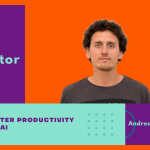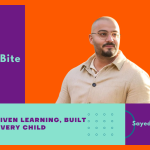Lazybird was created out of frustration with the lack of accessible, high-quality voiceover tools. Co-founder Ellis Nguyen shares how the platform is cutting through industry inefficiencies, combining advanced AI with user-friendly features to make professional voiceovers simple, affordable, and effective.
1. What inspired the creation of Lazybird, and how has its mission evolved?
Ellis Nguyen: Lazybird was born from a need for accessible, high-quality voiceover solutions. Before starting this journey, we looked around for tools to use for creating human-like voiceovers and were deeply unsatisfied with the available solutions. Even though AI voice technologies have advanced significantly, decent tools were expensive and non-expensive tools were lacking. Even household names like ElevenLabs fell short of expectations due to not having enough customization and control. That’s why we started and that’s why we kept going.
2. What gaps in the voiceover and text-to-speech industry did Lazybird aim to address?
Ellis Nguyen: Traditional voiceover processes are often time-intensive and expensive. We provide a seamless, cost-effective alternative with fast turnaround times and customization features, empowering creators and businesses to produce professional-grade content without limitations. As mentioned, there was a severe lack of affordable, high-quality tools with reasonable enough control and customization. Lazybird fills that gap.
3. Lazybird offers over 200 voices across 100+ languages. How do these diverse options enhance the user experience?
Ellis Nguyen: The world is large, and there are so many cultures with unique languages and accents. Lazybird’s diverse range of over 200 voices across 100+ languages ensures users can create content that feels authentic and culturally relevant. We also provide different tones and emotions to suit various kinds of content that our users want to express.
4. Your pay-as-you-go model eliminates subscription barriers. How has this approach resonated with users?
Ellis Nguyen: Frankly, our “pay-as-you-go” experiment has not panned out very well. Most of our users opt for a subscription because it offers better quota and peace of mind. However, we will forever keep our guarantees regarding the ability to add additional quota as needed in the spirit of pay-as-you-go, as some of our users use the service heavily and need this capacity.
5. Lazybird’s API supports SSML and granular voice customization. How does this empower developers and enterprises?
Ellis Nguyen: This is what sets us apart from many of our competitors. Other apps mainly provide an interface to generate a blob of audio. For most use cases of a voiceover tool, users need more than that, including both individual and enterprise users. They need to control and edit various aspects of the voiceover, like pauses, pronunciation, tone, etc., and the other tools fall short of that. Although API is not our focus yet, its capacity allows many of our users, some aren’t even developers, to create valuable automations for themselves or their companies. We don’t require an expensive business plan and manual contact to have access to API; everyone can access it.
6. You highlight Lazybird’s suitability for various use cases, from podcasts to TikTok videos. Could you share examples of its impact on different content types?
Ellis Nguyen: We have received positive feedback from users in various industries and use cases. Some are professional writers who make audiobooks, some create TikTok and YouTube videos, some create commercials, and some even create educational content teaching language to kids. We appreciate all the feedback and seek to resolve any issues they might find while using the tool for their use case.
7. What trends in AI-powered voiceover technology do you foresee, and how does Lazybird align with them?
Ellis Nguyen: AI voices are going to get even more realistic and accessible. “Luxury” features in the past, like Voice Cloning, will become even more affordable and widely available. We’re actively working on those new advancements to add to Lazybird, and we aim to stay on top of the game. Another important note is that for some languages, there are not enough high-quality voices available or none at all. That’s another thing we’ll seek to improve on.
8. Lazybird emphasizes cost-effectiveness and scalability. How do you ensure affordability without compromising quality?
Ellis Nguyen: We’re an incredibly lean and efficient business. Our salary costs are at 0, and so are marketing costs. Not having to worry about fees and not having too many cooks in the kitchen allows us to have a speedy feedback loop and resolve issues almost immediately. Also, our KISS development philosophy, which means always opting for the simplest solution, helps keep the product simple and easy to test, both in terms of the interface and the underlying code.
9. What do you enjoy most and least about your journey in developing Lazybird?
Ellis Nguyen: The most rewarding part is seeing our tool empower creators worldwide and seeing people happy with their purchases. The most formidable challenge has been balancing rapid growth with maintaining a strong connection to our user base and keeping up with the amount of feedback, requests, and sometimes even hostile comments.
10. What was the biggest challenge your team faced, and how did you overcome it?
Ellis Nguyen: Scaling while keeping our product intuitive was a hurdle. There are so many things to add and implement that sometimes it even feels overwhelming. It’s hard to design a product that’s both powerful and easy to use. Thankfully, based on the feedback we have received from our customers so far, we have managed to do just that.
11. What does success mean to you, and what are your aspirations for Lazybird in the coming years?
Ellis Nguyen: We’re not going to tout some grand vision like making professional voiceover accessible to everyone; that sounds cool but is too far-fetched. If we have a sizable audience that finds the helpful product, and anyone can create a quality voiceover easily for an affordable price, that’s success in our books.
12. What does a typical day look like for your team at Lazybird?
Ellis Nguyen: It starts with checking the emails and support chat to ensure there’s no hanging customer support request. We aim to resolve any issue for customers on the same day, and more often than not, it is resolved within 10 minutes of the chat. After that, we look at the priority board and start developing and delivering the new features, carefully prioritized by complexity and usefulness.
Editor’s Note
Ellis Nguyen speaks with clarity about Lazybird’s purpose and growth. His insights show how the platform is not just filling gaps in the voiceover market but doing so with a clear focus on usability and real-world impact. Lazybird’s success highlights what happens when innovation stays grounded in solving everyday challenges.



